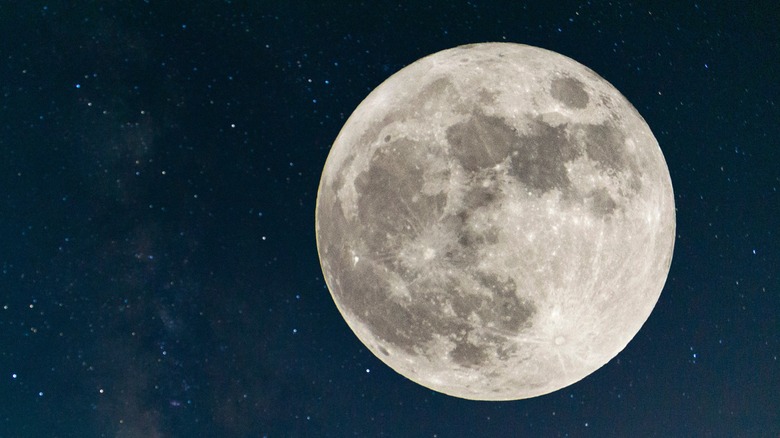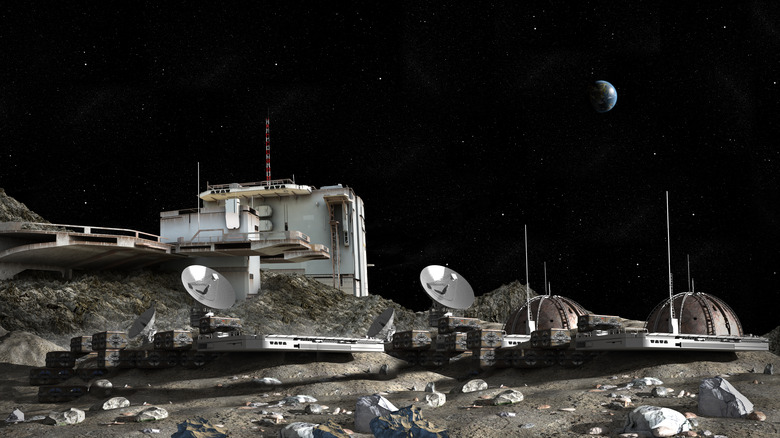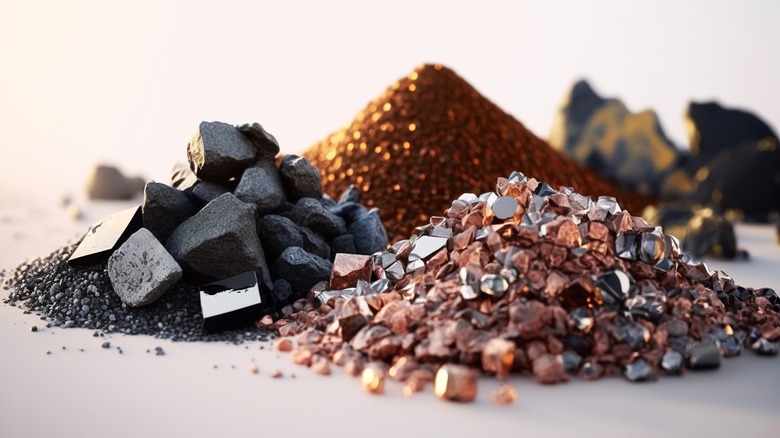Hydrogen Discovered In Moon Rocks Could Mean Big Things For Space Exploration
Expanding human civilization to the moon has been an ongoing theme in science fiction for decades, but as with all forms of space travel, it's not exactly a simple task. Logistics alone are a significant hurdle due to the distance alone, which creates communication delays and makes any timely emergency response from Earth impossible.
Getting building materials into space, over to the moon in one piece, and then constructing some form of base or colony would also be a colossal undertaking. Assuming money was no object, being able to launch payloads outside of the Earth's atmosphere requires a lot of meticulous calculation and consideration for overall weight, amounts of fuel (and the weight of the fuel), etc. This is why so much time and effort has been devoted to studying alternative methods of resource provision — everything from cooking moon rocks to using astronaut urine as a plasticizer (to make materials less brittle and more flexible) for 3D-printed construction.
Being able to offset some of those restrictions by using locally sourced minerals and gasses from the lunar surface would make something like a moon base much more feasible, and that's what the U.S. Naval Research Laboratory (NRL) has discovered. More specifically, studies carried out by the NRL found evidence of solar-wind hydrogen (particles released from the Sun and, in this case, deposited on the surface of the moon) in several lunar samples.
Why this is a big deal
Being able to source familiar chemicals, elements, and other substances from locations outside of Earth's atmosphere is handy in a general sense because it means less (or no) need to spend time, money, and resources bringing them along — or sending them out after the fact. In other words, space and lunar missions won't have to set aside as much weight allowance or cargo space to bring some supplies or figure out how to resupply current ones economically. The fact that it's hydrogen, however, makes it even more significant.
Hydrogen is extremely important to space exploration as it's regularly used in rocket fuel, food processing, and fertilizer production and is a key element for fuel cells. This means future lunar missions could potentially refine materials from rocks and soil on the surface to produce a number of helpful (or even essential) supplies to build and sustain something like a lunar base. It also means the potential to create water, a tricky commodity to manage without a series of complex systems designed to recycle wastewater and pull humidity out of the pressurized air.
Theoretically, this means future lunar bases could be partially — if not totally — self-sufficient. Extracting raw materials and refining them to keep the lights on and oxygen flowing, generating water for drinking and growing food, and so on.
But not yet
As promising as it may be to have a possible off-Earth source for important compounds, it will be some time before anyone starts putting it all to good use. Basically, the technology isn't quite there yet.
While scientists have been able to test samples for hydrogen successfully, there still needs to be a reliable way to figure out which lunar materials actually contain it — because not every rock or piece of moon dust is necessarily filled with the stuff. Developing a method of locating hydrogen on the moon's surface will be key.
Additionally, there's the actual refinement process. How exactly will people be able to extract this hydrogen? How much of a yield would they get out of each sample? How long does it take for solar-wind hydrogen to be absorbed into the materials in the first place (i.e., would supplies "replenish" over time)? How many pieces of rock and other surface material will be needed to produce an adequately usable amount of hydrogen? How long will processing take, and how much energy will it require? Until we have it all figured out, don't expect to see lunar colonies "living off of the land" any time soon. But what's important is that the potential and possibility is there.


